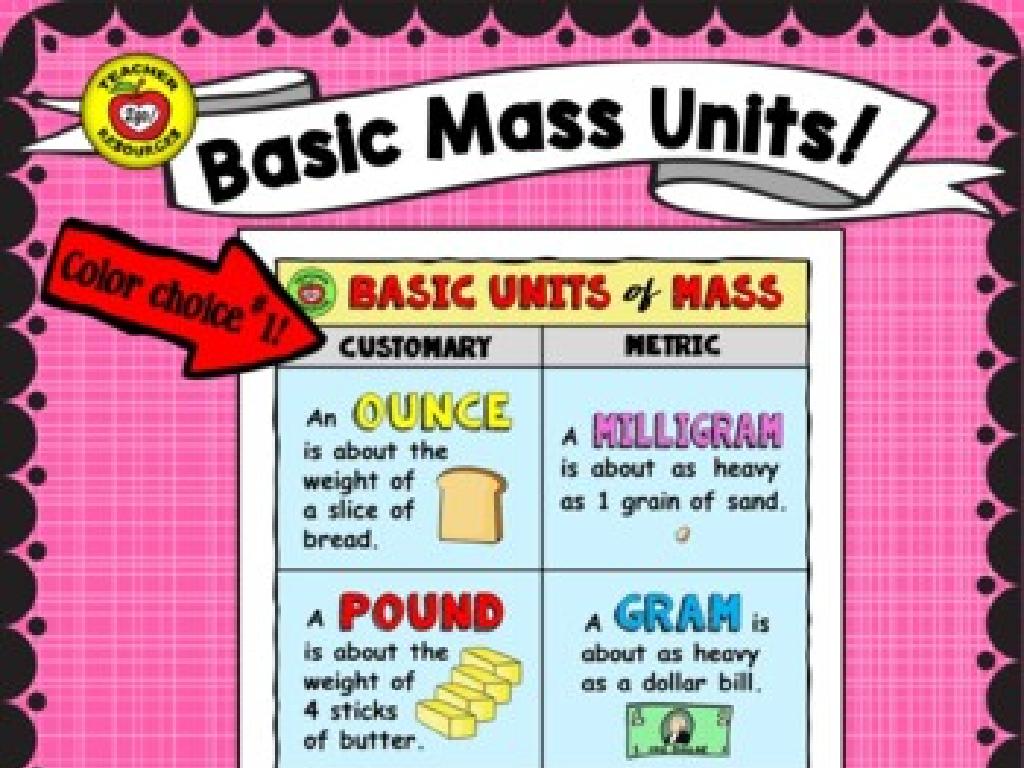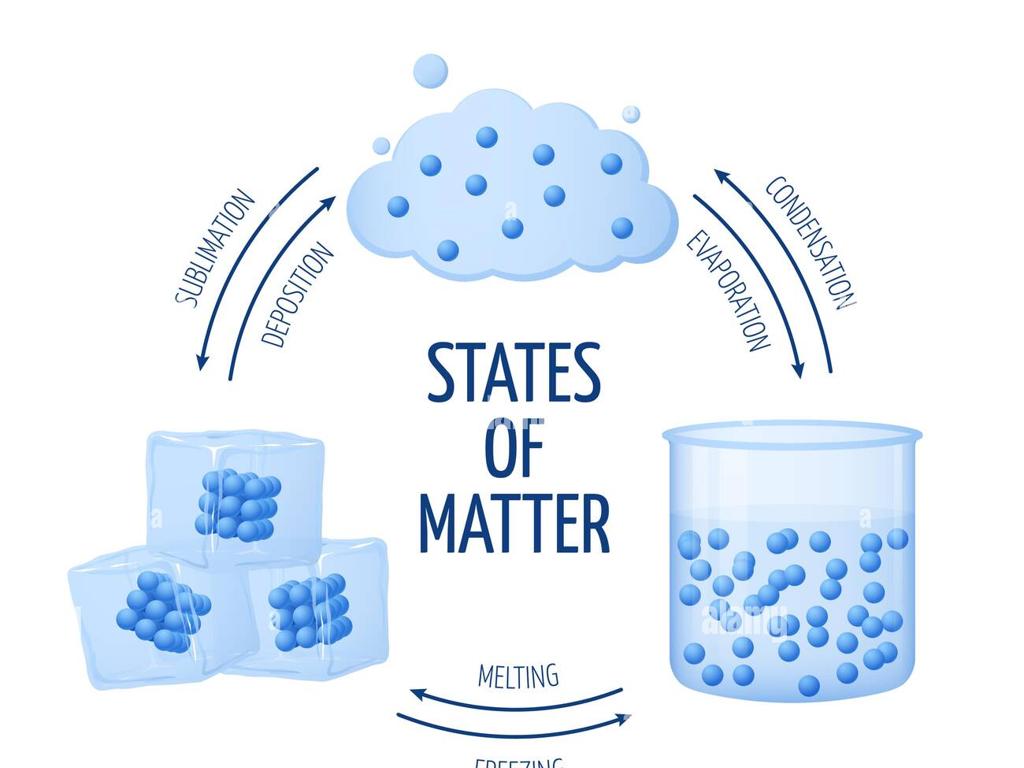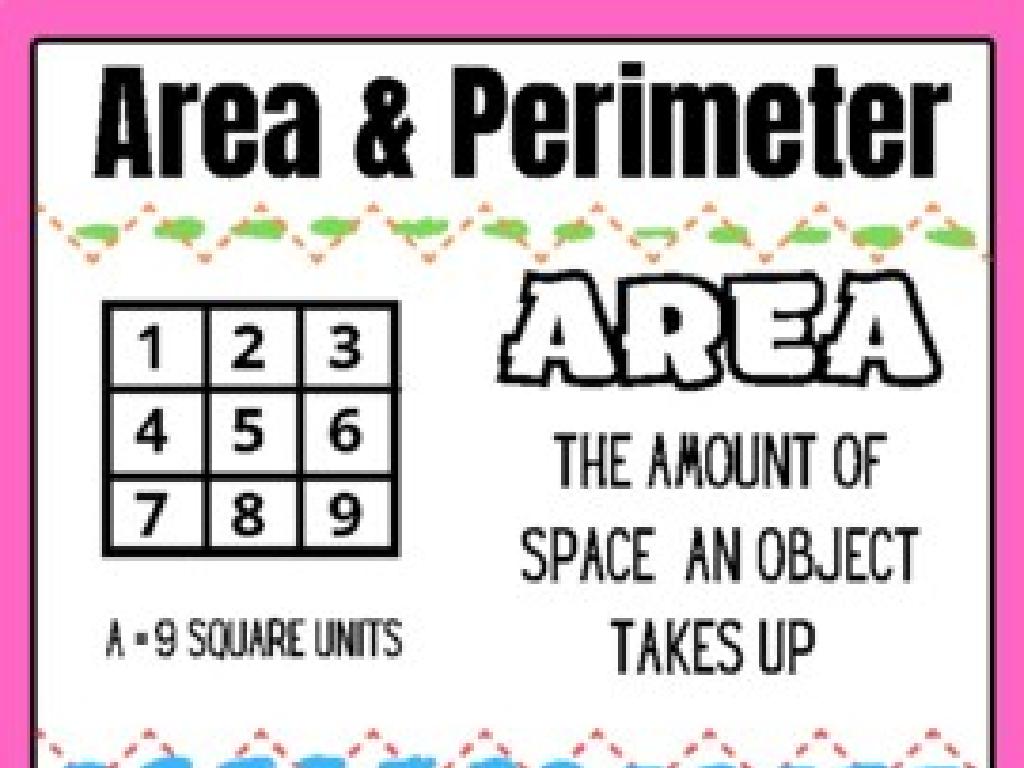Does The Adjective Tell You What Kind Or How Many?
Subject: Language arts
Grade: Fourth grade
Topic: Adjectives And Adverbs
Please LOG IN to download the presentation. Access is available to registered users only.
View More Content
Exploring Adjectives: What Kind and How Many?
– Adjectives describe nouns
– They tell us more about people, places, and things.
– ‘What kind’ adjectives detail traits
– Examples: ‘fluffy’ cat, ‘sparkling’ water
– ‘How many’ adjectives specify quantity
– Examples: ‘three’ cookies, ‘several’ stars
– Become a descriptive detective!
|
This slide introduces the concept of adjectives and their role in providing more information about nouns. Emphasize that adjectives can describe ‘what kind’ of noun we’re talking about, such as color, shape, size, etc., or they can tell us ‘how many’ there are. Provide examples for each type and encourage students to think of their own. The ‘descriptive detective’ activity will involve students identifying adjectives in sentences and determining whether they describe ‘what kind’ or ‘how many’. This will help solidify their understanding of adjectives and improve their descriptive writing skills.
Exploring Adjectives
– Adjectives describe nouns
– Words like ‘small’, ‘bumpy’, ‘soft’ tell us about a noun’s qualities
– They specify kind or quantity
– ‘Three’ chairs, ‘many’ stars – tell us number or amount
– Examples: ‘blue’, ‘seven’, ‘happy’
– ‘Blue’ describes the sky, ‘seven’ tells how many cookies, ‘happy’ shows the dog’s mood
– Practice identifying adjectives
|
This slide introduces the concept of adjectives to fourth-grade students. Adjectives are words that add detail to nouns, giving us more information about objects, people, and places. They can describe the characteristics of a noun, such as color, shape, and size, or indicate the quantity of the noun. Use examples that are relatable to the students, like ‘blue sky’ to describe color, ‘seven cookies’ to indicate number, and ‘happy dog’ to describe mood. Encourage students to think of their own examples and to practice identifying adjectives in sentences. This will help them understand how adjectives enrich language and improve their descriptive writing skills.
Adjectives: What Kind and How Many?
– Adjectives describe qualities
– They tell us about an object’s features
– ‘Fluffy’, ’round’, ‘sour’ examples
– A ‘fluffy’ cat feels soft, a ’round’ ball has no edges, a ‘sour’ lemon tastes sharp
– Describe with what-kind adjectives
– Practice with classroom objects
– Look around and use adjectives to describe items
|
This slide introduces the concept of adjectives that describe what kind of object or person we are talking about. It’s important to convey that these adjectives provide specific details about features or qualities such as shape, size, color, and more. Use tangible examples like ‘fluffy’ for a cat, which suggests a soft texture, or ’round’ for a ball, indicating its shape. Encourage students to actively participate by looking around the classroom and coming up with their own descriptive adjectives for various objects. This activity will help solidify their understanding of adjectives related to kind and enhance their descriptive language skills.
Adjectives: How Many?
– Adjectives show quantity
– Examples: ‘three’ bears, ‘many’ stars
– ‘Three’ describes the exact number of bears
– ‘Few’ cookies example
– ‘Few’ suggests not many cookies are left
– Count classroom items
– Use adjectives to count things like books, pencils
|
This slide introduces the concept of adjectives that describe quantity. Start by explaining that adjectives can tell us ‘how many’ of something there are. Provide clear examples with visual aids if possible, such as pictures of three bears or many stars. Encourage students to think of ‘few’ as a way to describe a small quantity, and use a real-life example like a few cookies in a jar. For an interactive activity, have students look around the classroom and count various items, using adjectives to describe the quantity of each item. This will help them apply the concept of quantity adjectives to tangible objects in their environment. Prepare to assist students with examples and guide them in identifying appropriate adjectives for different quantities.
Comparing with Adjectives
– Adjectives describe and compare
– ‘Bigger’, ‘smallest’, ‘faster’
– Examples: A bigger book, the smallest desk, a faster computer
– Adjectives tell us kind or number
– ‘Three’ pencils (number), ‘blue’ sky (kind)
– Let’s compare classroom items!
– Find items to compare: Which is heavier? Lighter? Taller? Shorter?
|
This slide introduces the concept of comparative adjectives to the students. Explain that adjectives are not just for describing a single item, but they can also be used to compare two or more things. Use examples like ‘bigger’, ‘smallest’, and ‘faster’ to illustrate how these words give us information about the quality or quantity of the items they describe. Encourage students to look around the classroom and think of items they can compare using these adjectives. This activity will help them understand the concept of comparison and how adjectives function in sentences. Provide guidance on how to use these adjectives in sentences and encourage students to think of their own examples.
Activity Time: Adjective Hunt
– Explore the classroom on an adjective hunt
– Describe objects with adjectives
– Use adjectives like ‘shiny’ or ‘three’ to describe objects
– Work in pairs and note your findings
– Share your adjectives with the class
|
This activity is designed to help students understand and practice using adjectives in a fun and interactive way. Have the students walk around the classroom and find objects they can describe using adjectives that specify ‘what kind’ (e.g., ‘fluffy’, ‘cold’, ‘colorful’) or ‘how many’ (e.g., ‘five’, ‘several’, ‘many’). They should work in pairs to encourage collaboration and discussion, writing down the object and the adjectives they chose. After the hunt, each pair will have the opportunity to share their findings with the class, which will reinforce their understanding and provide a chance to learn from each other. As a teacher, be prepared to guide them with examples if they get stuck and ensure that they understand the difference between adjectives that describe characteristics and those that indicate quantity.
Class Discussion: Exploring Adjectives
– Share found adjectives
– Reasons for choosing adjectives
– Did the adjective describe a color, size, or a feeling?
– Role of adjectives with nouns
– Adjectives give us details about nouns, like ‘fluffy dog’ or ‘five cookies’.
– Enhancing noun understanding
|
This slide is meant to facilitate a class discussion on adjectives. Students will share the adjectives they found during the previous activity, explaining their choices and discussing the role these adjectives play in sentences. Encourage them to think about whether the adjectives tell us what kind (quality, color, size, shape) or how many (quantity). This will help them understand how adjectives provide more information about nouns, making descriptions clearer and more vivid. For the teacher: Prepare to guide the discussion by asking probing questions, such as ‘How does the adjective change your image of the noun?’ or ‘Can you think of a different adjective that would change the meaning?’ Have a few examples ready for different types of adjectives to ensure a comprehensive understanding.
Adjective Experts: Homework Challenge
– Congratulations on mastering adjectives!
– Homework: Craft 10 sentences
– Create sentences using descriptive adjectives
– Use adjectives for ‘what kind’ and ‘how many’
– Include adjectives that specify characteristics and quantity
– Share your sentences next class
|
This slide wraps up the lesson on adjectives by acknowledging the students’ understanding of how adjectives describe ‘what kind’ or ‘how many’. The homework assignment is designed to reinforce their knowledge by applying it in a practical exercise. Students are tasked with writing 10 original sentences that incorporate adjectives to describe both the kind and the number of nouns. Encourage creativity and the use of a variety of adjectives learned in class. In the next session, students will have the opportunity to share their sentences, allowing them to learn from each other’s examples and further solidify their grasp of the concept.






